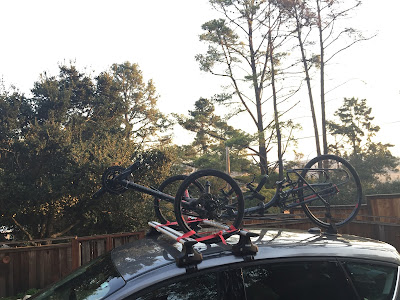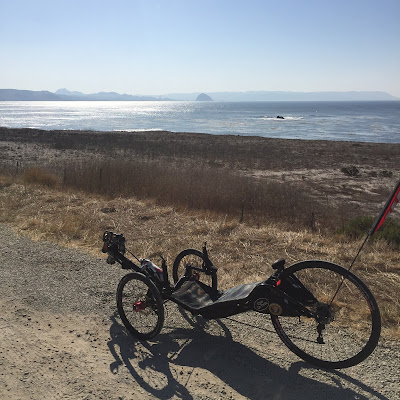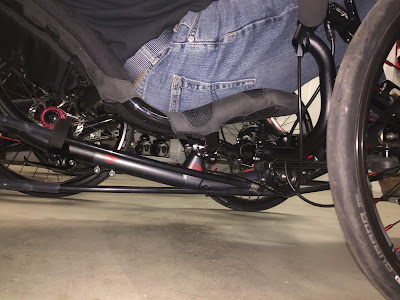January
First Ride of the New Year
2017 was a good year for riding. Busy with work on the new house I only managed 39 rides during 2016. I looked forward to 2017 as the year to reboot by riding and get some quality miles in.
 |
February
Central Coast Sunshine
A few days of sunshine during February. But February was a rainy month.
March
Kojak and Chip Seal
It seemed like most of 2017 was spent trying to figure out how to best prepare for the varied road conditions along the Central Coast.
April
Down to One Car
My old Ford Escape was sitting collecting dust and the battery kept dying from non-use. So I sold it and we became a one car household. First I made sure our Ford C-max would hold the 700 inside. It did.
May
Thule Roof Rack, Seasucker and Trike
Now with only one small car I needed a backup plan for carrying the trike on top of the car when there's no room inside.
June
W R Hearst State Beach
Getting familiar with the Central Coast and getting to know my favorite spots to take a break.
July
I'm getting use to not having the use of part of my right calf muscle.
August
The ICE Sprint 26fs I purchased late in 2016 spent some time at Bent Up Cycles after I returned it. The carbon seat heard my hips. In August I decided to pick it up and give it another try with a new mesh seat instead of the carbon fiber seat.
September
I'm Keeping Both Trikes
In September I decided to keep both my 700 and the ICE Sprint. I really wanted the Sprint to work for me but I was still spending more time riding my 700.
October
October On the Central Coast
My 700 is still getting more ride time then the Sprint.
November
I turned my focus back to the Sprint. I played around with the mesh seat until it was comfortable. At least comfortable enough.
December
Who am I fooling? I can't make the ICE Sprint work for me. I gave it a good try. I traded it in for a Catrike Expedition!! I know the Expedition well. It was my first trike. I still feel it's the best and most versatile rike around. It's on order and will be here in January. With the right tires and it's more upright seat position it will be my go to trike for longer rides and rides on rough roads.















































